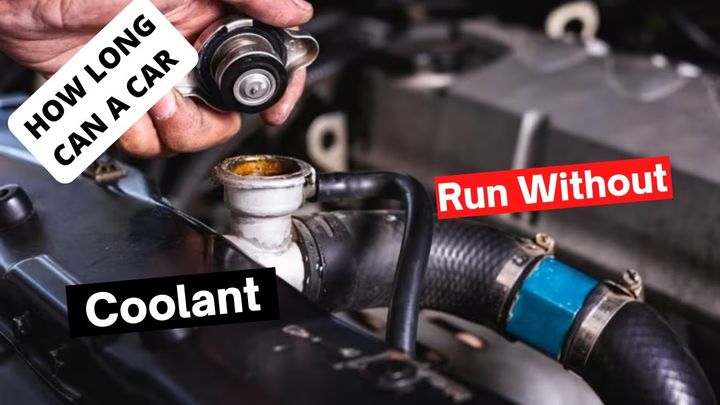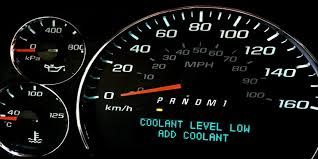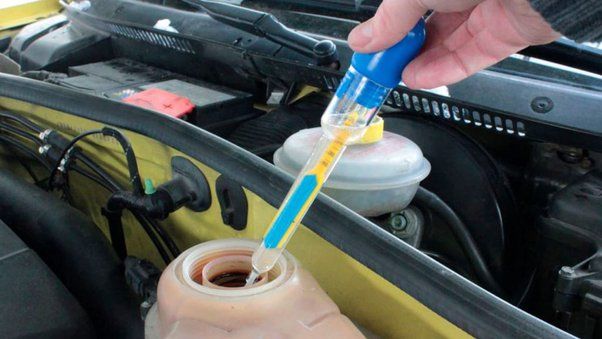


Coolant plays a vital role in regulating your engine's temperature by absorbing and transferring heat away from the combustion process. Driving without coolant can quickly lead to overheating, potentially causing catastrophic engine damage. This article explores the factors that determine how long you can drive without coolant, the signs of overheating, the consequences of driving without coolant, and what to do if you find yourself in such a situation.

Several factors influence how far you can drive without coolant before risking engine damage. Understanding these factors is crucial in assessing the severity of the situation.
| Factor | Impact |
|---|---|
| Coolant Level | Lower levels increase the risk of overheating, especially under heavy engine loads or hot weather conditions. |
| Leak Severity | A slow leak may allow you to drive a short distance, but a major leak or a completely dry cooling system can cause overheating within minutes. |
| Vehicle Age and Condition | Older vehicles or those with cooling system issues are more susceptible to overheating when low on coolant. |
| Driving Conditions | Hot weather, stop-and-go driving, and heavy loads increase cooling demands, leading to faster overheating. |
Recognizing the signs of overheating is crucial to prevent further damage. Common indicators include:
Warning lights or gauges indicating overheating or low coolant levels
Temperature gauge needle rising towards the red zone
Steam or smoke coming from under the hood
Unusual noises, such as knocking or tapping

Driving without coolant can have severe consequences for your engine, potentially leading to costly repairs or even the need for a complete engine replacement.
Overheating can cause various forms of engine damage, including:
Warped or cracked cylinder heads
Blown head gaskets
Seized pistons or bearings
Damaged water pump or radiator
Repairing an overheated engine can be extremely expensive, potentially costing thousands of dollars. In severe cases, a complete engine rebuild or replacement may be necessary.
If your engine overheats and fails while driving, you may find yourself stranded and in need of a tow truck, adding to the overall cost and inconvenience.
If you find yourself in a situation where your coolant has run out or is extremely low, take immediate action to prevent further damage:
Pull over and shut off the engine immediately.
Call for roadside assistance or a tow truck to have your vehicle transported to a repair shop.
Do not add water or attempt temporary fixes, as these can cause additional problems.
While not recommended, there may be situations where you need to drive a short distance with low coolant levels. In such cases, consider the following:
| Temporary Fix | Safety Precaution |
|---|---|
| Add a 50/50 mixture of water and coolant | Drive slowly and avoid heavy loads |
| - | Monitor temperature gauge or warning lights |
| - | Be prepared to pull over and shut off the engine |
| - | Have your vehicle towed if the problem persists |
Remember, prevention is key when it comes to maintaining your vehicle's cooling system. Regular maintenance, prompt leak repairs, and timely coolant replacements can help ensure your engine stays cool and operates at peak performance.
Coolant plays a crucial role in regulating the engine's temperature by absorbing and transferring heat away from the combustion process. It prevents the engine from overheating and potential damage.
Common signs of an overheating engine include warning lights or gauges indicating overheating, temperature gauge needle rising towards the red zone, steam or smoke coming from under the hood, and unusual noises like knocking or tapping.
Driving without coolant can lead to severe engine damage, such as warped or cracked cylinder heads, blown head gaskets, seized pistons or bearings, and damaged water pump or radiator. It can also result in costly repairs or even the need for a complete engine replacement.
If your coolant runs out while driving, you should pull over and shut off the engine immediately, call for roadside assistance or a tow truck, and avoid adding water or attempting temporary fixes, as these can cause additional problems.
While not recommended, you may be able to drive a short distance with low coolant levels by adding a 50/50 mixture of water and coolant, driving slowly, avoiding heavy loads, monitoring the temperature gauge or warning lights, and being prepared to pull over and shut off the engine if the problem persists.
Regular maintenance, prompt leak repairs, and timely coolant replacements can help prevent coolant-related issues and ensure your engine stays cool and operates at peak performance.
Factors that affect how long you can drive without coolant include coolant level, leak severity, vehicle age and condition, and driving conditions such as hot weather, stop-and-go driving, and heavy loads.
The safest course of action if your coolant runs out is to pull over and shut off the engine immediately, and call for roadside assistance or a tow truck to have your vehicle transported to a repair shop.
Adding water to the cooling system is generally not recommended as a temporary fix, as it can cause additional problems and may not effectively cool the engine.
Driving without coolant can lead to costly repairs, potentially costing thousands of dollars for engine repairs or even a complete engine replacement, as well as the cost of towing if the engine fails while driving.

Miguel started tinkering with car radios as a teenager, fascinated by the intricate dance of wires and circuits. This passion led him to pursue a career as an automotive electrician. For the past 10 years, Miguel has tackled everything from flickering headlights to mysterious electrical gremlins. He thrives on troubleshooting electrical problems and enjoys sharing his knowledge to empower car owners to understand their vehicles better.













